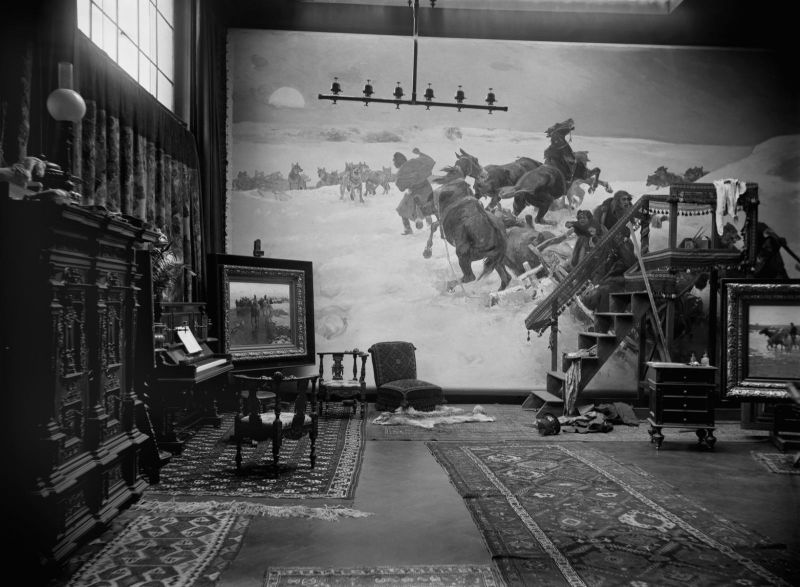Ateliers of Polish painters in Munich ca. 1890
Mediathek Sorted
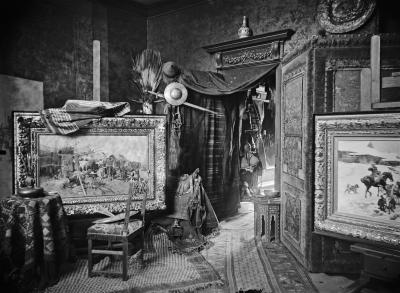
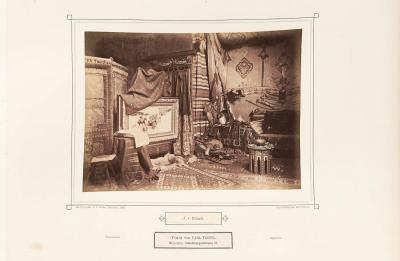

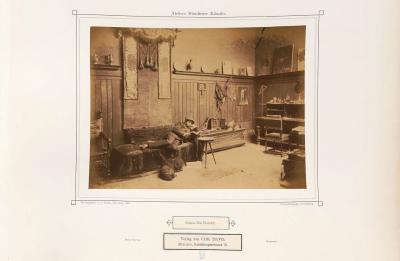






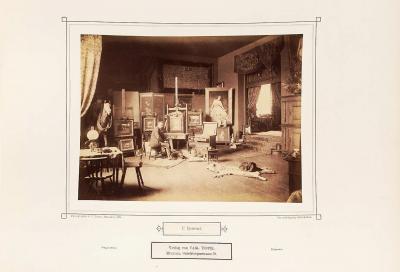




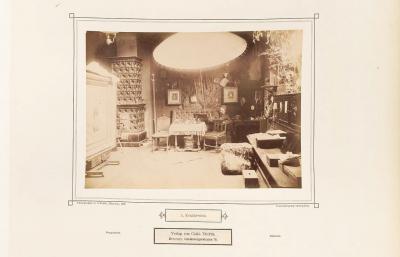


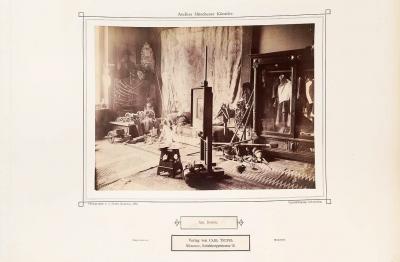



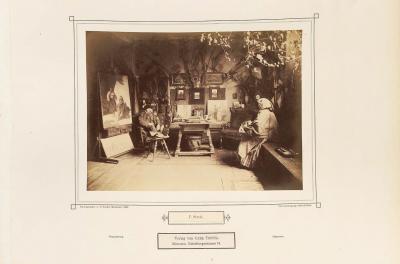

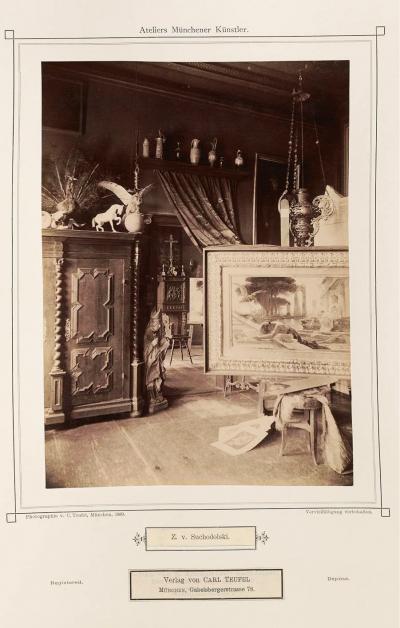

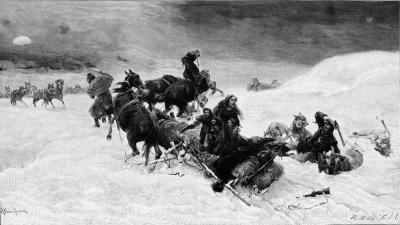


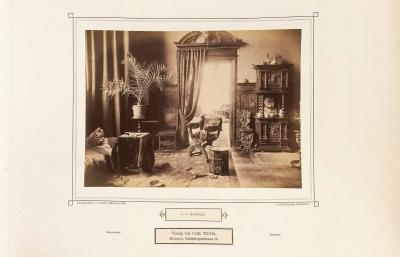
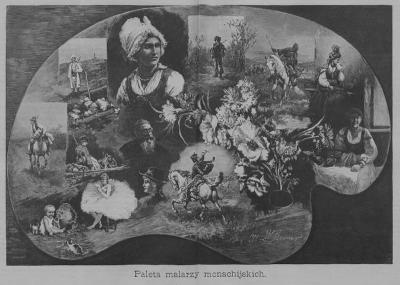


In 1885 Zdzisław Jasiński (1863-1932) [108], a member of a Warsaw artist family, came to Munich to study after previously studying under prominent teachers at the Warsaw Drawing Class/Klasa Rysunkowa and at the School for Drawing and Painting/Szkoła Rysunku i Malarstwa in Krakow. He enrolled in the Munich Art Acedemy under the genre and landscape painter Otto Seitz (1846-1912). In the same semester, the Poles Stanisław Radziejowski (1863-1950)[109], Apoloniusz Kędzierski (1861-1939)[110], Zygmunt Ajdukiewicz (1861-1917)[111] and Feliks Cichocki Nałęcz (1861-1921)[112] began their studies either under Seitz or in the painting class given by Nikolaus Gysis (1842-1901) and the nature class given by Johann Caspar Herterich (1843-1905).[113] Jasiński also studied historic painting under Wagner until 1889. In 1888, during his studies, he showed a painting “Peddler” at the Third International Art Exhibition in the Glaspalast.[114] The year after that, he exhibited his painting “The ailing mother” at the Munich Annual Exhibition of Artworks from all Nations,[115] which can also be seen on the easel in Teufel’s atelier photograph (Fig. 10). The painting was awarded a prize at an exhibition held by the Art Academy and then became so well known that it was produced the following year in a Paris publication as an etching and is still produced today as the original (Fig. 10a, b).
Jasiński also showed his works in the exhibitions in the Glaspalast in the ensuing years. He painted pictures of figures with religious scenery, such as “Feast day mass” or “Palm Sunday”, created rustic scenes, which played out indoors or in the surrounds of the village, landscapes, portraits, pictures of children, and some large-format symbolic compositions and allegories. When he was photographed by Teufel, the painter was working on a presumably allegorical composition with two sisters, graces or nymphs in a dramatic, large-format landscape – he was well dressed in a professional but unobtrusive pose. His atelier was in the Munich Art Academy.[116] That is why there are no homely decorations, carpets or wall panellings of any kind. Throughout his time in Munich, the artist was not listed under any other address. Another version of the small painting showing the child reading in the bottom left corner of the photograph possibly went to a collector in America because a colour art print was sold from there right into the 21st century showing the correct name of the artist and going by the title of “My First Picture Book”.[117] Jasiński returned to Warsaw in 1894.
When Teufel photographed Kazimierz Pułaski (Kasimir von Pulaski, 1861-1947)[118], he photographed a painter who had hardly come to anybody’s attention at this point, but who presumably had prominent proponents. Pułaski grew up in the family of his cousin Wojciech Kossak (1856-1942)[119] in Krakow, who himself had studied in Munich from 1873 to 1876 and had become an acknowledged painter in Krakow. Pułaski initially studied architecture at the Polytechnic in Riga and then served in the army. In 1889/90, he came to Munich to study painting. However, he did not enrol at the art academy presumably learning under Brandt instead, who he visited often in later years. Based on the style of Kossak and Brandt, he painted war and military scenes, equestrian and hunting pictures, but also landscapes and portraits. In the photograph, which was probably taken in 1893 (Fig. 13), he presents an as yet unframed painting that he has just finished with an arrangement comprising a saddle, a lateral sword, bags, belts, cartographic material and, as the highlight, a bird of prey with outspread wings, which he had previously constructed from actual equipment in front of a piece of material.
[108] Detailed biography in the Encyclopaedia Polonica, https://www.porta-polonica.de/de/lexikon/jasinski-zdzislaw-piotr
[109] Detailed biography in the Encyclopaedia Polonica, https://www.porta-polonica.de/de/lexikon/radziejowski-stanislaw
[110] Detailed biography in the Encyclopaedia Polonica, https://www.porta-polonica.de/de/lexikon/kedzierski-apoloniusz
[111] Detailed biography in the Encyclopaedia Polonica, https://www.porta-polonica.de/de/lexikon/ajdukiewicz-zygmunt
[112] Detailed biography in the Encyclopaedia Polonica, https://www.porta-polonica.de/de/lexikon/cichocki-nalecz-feliks
[113] Stępień/Liczbińska 1994, page 15
[114] Illustrated catalogue of the Third International Art Exhibition (Munich Anniversary Exhibition) in the Royal Glaspalaste in Munich 1888, page 62 (see online resources)
[115] Illustrated catalogue of the Munich Annual Exhibition of Artworks of all Nations in the Royal Glaspalaste, Munich 1889, page 45
[116] Langer 1992, page 174
[117] Fulcrum Gallery, South Brunswick, New Jersey, https://www.fulcrumgallery.com/Zdzislaw-Jasinski/My-First-Picture-Book_384732.htm
[118] Detailed biography in the Encyclopaedia Polonica, https://www.porta-polonica.de/de/lexikon/pulaski-kazimierz
[119] Detailed biography in the Encyclopaedia Polonica, https://www.porta-polonica.de/de/lexikon/kossak-wojciech





















































































